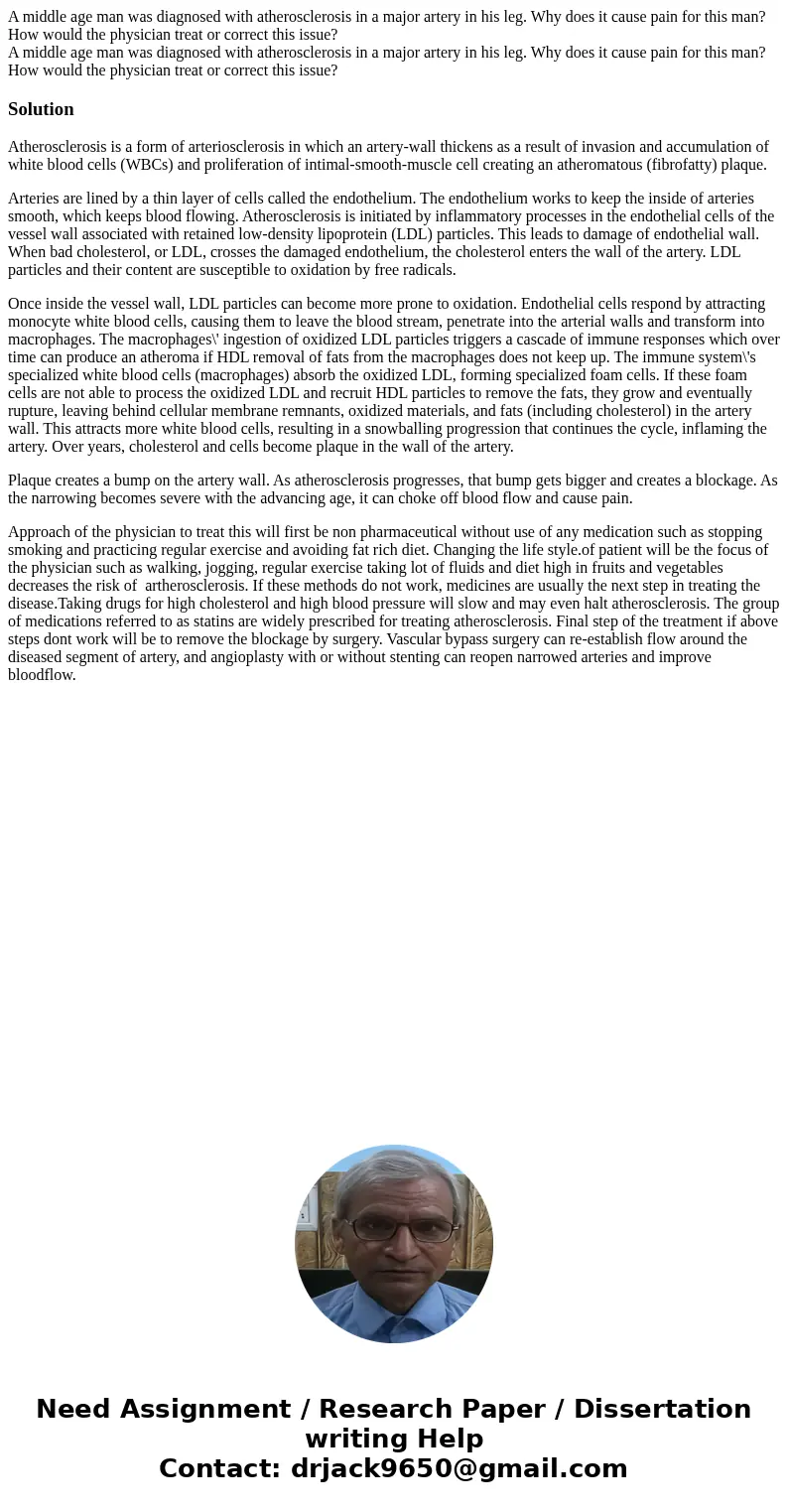A middle age man was diagnosed with atherosclerosis in a maj
Solution
Atherosclerosis is a form of arteriosclerosis in which an artery-wall thickens as a result of invasion and accumulation of white blood cells (WBCs) and proliferation of intimal-smooth-muscle cell creating an atheromatous (fibrofatty) plaque.
Arteries are lined by a thin layer of cells called the endothelium. The endothelium works to keep the inside of arteries smooth, which keeps blood flowing. Atherosclerosis is initiated by inflammatory processes in the endothelial cells of the vessel wall associated with retained low-density lipoprotein (LDL) particles. This leads to damage of endothelial wall. When bad cholesterol, or LDL, crosses the damaged endothelium, the cholesterol enters the wall of the artery. LDL particles and their content are susceptible to oxidation by free radicals.
Once inside the vessel wall, LDL particles can become more prone to oxidation. Endothelial cells respond by attracting monocyte white blood cells, causing them to leave the blood stream, penetrate into the arterial walls and transform into macrophages. The macrophages\' ingestion of oxidized LDL particles triggers a cascade of immune responses which over time can produce an atheroma if HDL removal of fats from the macrophages does not keep up. The immune system\'s specialized white blood cells (macrophages) absorb the oxidized LDL, forming specialized foam cells. If these foam cells are not able to process the oxidized LDL and recruit HDL particles to remove the fats, they grow and eventually rupture, leaving behind cellular membrane remnants, oxidized materials, and fats (including cholesterol) in the artery wall. This attracts more white blood cells, resulting in a snowballing progression that continues the cycle, inflaming the artery. Over years, cholesterol and cells become plaque in the wall of the artery.
Plaque creates a bump on the artery wall. As atherosclerosis progresses, that bump gets bigger and creates a blockage. As the narrowing becomes severe with the advancing age, it can choke off blood flow and cause pain.
Approach of the physician to treat this will first be non pharmaceutical without use of any medication such as stopping smoking and practicing regular exercise and avoiding fat rich diet. Changing the life style.of patient will be the focus of the physician such as walking, jogging, regular exercise taking lot of fluids and diet high in fruits and vegetables decreases the risk of artherosclerosis. If these methods do not work, medicines are usually the next step in treating the disease.Taking drugs for high cholesterol and high blood pressure will slow and may even halt atherosclerosis. The group of medications referred to as statins are widely prescribed for treating atherosclerosis. Final step of the treatment if above steps dont work will be to remove the blockage by surgery. Vascular bypass surgery can re-establish flow around the diseased segment of artery, and angioplasty with or without stenting can reopen narrowed arteries and improve bloodflow.

 Homework Sourse
Homework Sourse